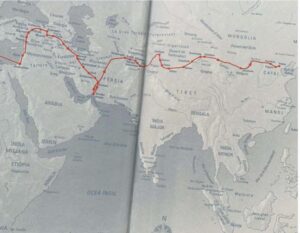A book is pure paper: on the cover, the endpapers, each one of its pages… There is no doubting that, which is why we asked an expert in the matter to explain why a good choice of this material is essential to a publishing house that tells its readers stories through its books. Pere Sureda, a publisher, manages Navona Editorial, which specialises in the publication of literature and essays. Moreover, he attaches great value to the medium that hosts the characters and scenarios. We talked to him about his “relationship” with paper in the pages of books.

How was this publishing house created?
It was born of a legacy. Two elderly friends, 86 and 82 years old, had a publishing house which worked with another kind of books. I helped them out of friendship, and when they died, in April and June 2015, they left their business to me. I turned it into Navona Editorial because the books that I publish are the ones that I like to read and/or which I believe deserve to have the opportunity to be read.
What type of books are you publishing now?
Literature and essays in Spanish and in Catalan. Quality literature, forgotten classics or those that were poorly translated in the past and which we reinterpret with greater accuracy.


Paper is the travelling companion of the person who reads the book and cradles it in their hands. How do you choose a paper so that it will become the ideal “buddy”?
Paper is essential: books are about sense of touch and smell and reading. Without these three painstakingly-studied factors, and if we do not know who our target readers are, we could never sell or distribute books. We are talking about quality literature, well-written essays that are a pleasure to the senses of the possible buyer, who will become a reader and will tell their friends what they are reading. This prescription is essential.

What mechanical characteristics should paper have for it to be transformed into a good book cover and to withstand the passing of time, as well as all the opening and closing?
As I mentioned when I talked about how Navona Editorial came to be, I am in books because I want to read them myself, and after doing this for 47 years I definitely know what readers appreciate first and foremost. The first thing is that it must be real paper, not just paper pulp. Secondly, it must be able to stand up to several readings and the passing of time with dignity.
However, on the other hand, besides these mechanical properties, there are certain fundamental aspects that must be considered in layout. More specifically there are two essential points: layout requires legible lettering, neither too bulky nor too small; and a good line-spacing, since that is the cornerstone of comfortable reading. The layout must breathe, you should not need to make an effort to read it, and when you turn the page you must encounter a new page with suitable spacing, one that breathes.
What processes, besides printing, do you apply to a cover?
It depends on whether it is rustic or a hard cover with a dust jacket. Navona Editorial tries to play with the feel of the cover and we do UVI curing to highlight the brightness of a given image. We do the rest in matt.
Paper, and its finishes, also has an aesthetic function to entice readers: a good attention-grabbing cover that pulls you into it. What aesthetic factors do you consider when choosing a material?
We choose them depending on the collection. Each one has its cover paper, one that defines it, and a text and image structure that is repeated to encourage the reader to “mentally collect them”. Someone once said that form (i.e. the wrapping) usually matches content, and this is a maxim that we apply.
Besides the actual paper, what other factors do you take into account when you create a cover?
If they are typographic, the typography we choose must mirror the inside of the book, provide a clear reference. On the other hand, if the books include illustrations, we choose from different pictures until we find one that will make the book jump out at the possible reader in the bookshop, as if saying “pick me up, touch me, read me”. There are countless images so we need to make sure we stand out.
Paper, moreover, is related to the senses (sense of sight, touch and smell), as I already said. What does Navona Editorial regard as a good material that will help to enhance the reading experience?
In a publishing house like Navona, which does not expressly target the general public, we know that the material chosen must be strong, durable and should not age prematurely. In this regard, Guarro Casas has an excellent range that gives us a lot of creative leverage.
Why are endpapers so vital, even although they often go unnoticed by the reader?
Because they afford the book solidity and also allow you to display reviews and other titles in the collection.
Do you think that paper is still valid in the book sector?
As in other topics, opinions will differ vastly, and some people will believe that it is not necessary, although Navona is convinced that “in the worst-case scenario” paper will live forever alongside other containers selling the same content. It is the almost-perfect substrate: it is not heavy, it never “crashes” (a very digital thing), it does not need anything else whatsoever, only somebody who wants to read it. On the beach, in the Arctic or on a train, there is no place where you cannot read a paper-format book.
What does the future hold for the industry?
We may well run into a couple of tough years on account of the general situation, although as of 2024 we will return to higher levels of consumption of paper books than before the pandemic and things will then stabilise and grow. The societies of the future cannot afford to have misinformed citizens and there is no better information than that which you can find in a novel or in a good essay. Newspapers are out of date the next day; the knowledge conveyed and the stories told by books live on.
